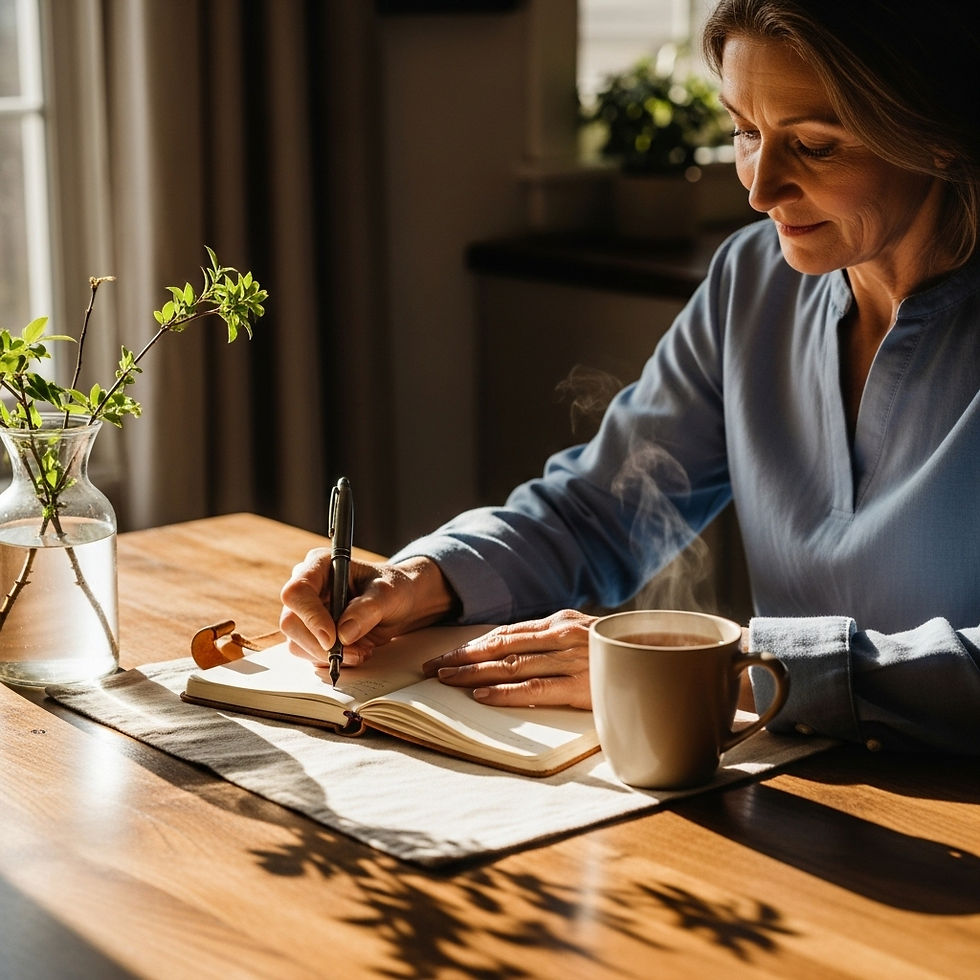Rhomboid Pain Relief: When Mid-Back Tension Is Really Emotional Overload
- Claire Duvall

- Sep 25
- 3 min read
There’s a kind of ache that doesn't follow a workout. It arrives in quiet moments; in the carpool line, between deadlines, and while answering everyone else’s needs but your own.
That persistent tightness between your shoulder blades? You're not imagining it. And you’re not alone.
For many women, rhomboid muscle pain relief isn’t just about posture. It’s the body’s quiet signal that the emotional load is too heavy.
Tension between the shoulder blades, especially the rhomboid muscles, can often stem from emotional overload, not just physical stress. When your nervous system is stretched thin, it speaks through sensation. Healing this kind of pain calls for care that reaches both the body and the heart.
Why Your Mid-Back Feels Tight (Even If You Didn’t Work Out)
That stubborn ache between your shoulders? It’s more than muscular. It’s emotional. For women carrying layers of caregiving, responsibility, and unspoken worry, the mid-back becomes a holding space. It supports more than spine and posture; it often carries the invisible weight of life’s “I’ve got this” moments.
Even without lifting or twisting, chronic emotional stress in back subtly activates muscles. What shows up as physical tension often has deeper roots.

The Mind-Body Connection: How Stress Lives in Our Muscles
Your nervous system is always listening, attuned to the signals of safety and threat, even the emotional kind. In states of ongoing stress, the sympathetic system keeps muscles braced, long after the moment has passed. That’s why your back can feel sore at the end of a “normal” day.
For women who often hold others, emotionally and logistically, rhomboids become storage banks for overwhelm. Reclaiming a sense of ease starts by honoring the link between stress and muscle memory, and offering yourself the softness you extend to others.
Why Posture Fixes Alone Fall Short
Stretching. Ergonomic chairs. Foam rollers. They help, temporarily. But when tension returns, it often points to something deeper. Posture alone can’t release what we never voiced.
If your emotional landscape remains tense, your body will mirror it. Mid back tension relief comes when we make the body feel safe; when we tend to both the spine and the stories it’s been carrying.
Body-First Relief: Magnesium and Nervous System Reset Rituals
Invite your body to step out of “fight or flight” and into calm. Topical Zechstein magnesium for muscle tension, pure and easily absorbed through the skin, helps ease overactive nerves and soften tight muscle patterns.
Pair it with gentle, belly-deep breaths or grounding walks on earth, barefoot. This kind of ritual whispers: I see the weight you’ve been carrying. And now, let’s lay it down. Discover how to work with magnesium as a partner in your physical-emotional healing journey, from the inside out.

Build a Back-Soothing Evening Routine
Let your evenings become a soft landing. Begin with warmth; a bath, a shower, a heat pack. Follow with nourishing strokes of Zechstein topical magnesium pain relief oil on your upper back and shoulders.
Move slowly. Wrap yourself in softness. Reflect in a journal. Breathe deep and full. This kind of end-of-day care helps your system exhale what it doesn’t need to carry forward.
For deeper rest, magnesium may also support your sleep cycles and help restore natural rhythms. Because how you unwind matters. It shapes how you rise.

If your back feels like it’s holding more than muscle tension, you’re not imagining it. Explore our clean, effective magnesium blends designed to support you in natural pain relief for rhomboid tension; releasing, restoring, and returning to center inside and out.
*This content was enhanced using AI tools.



Comments